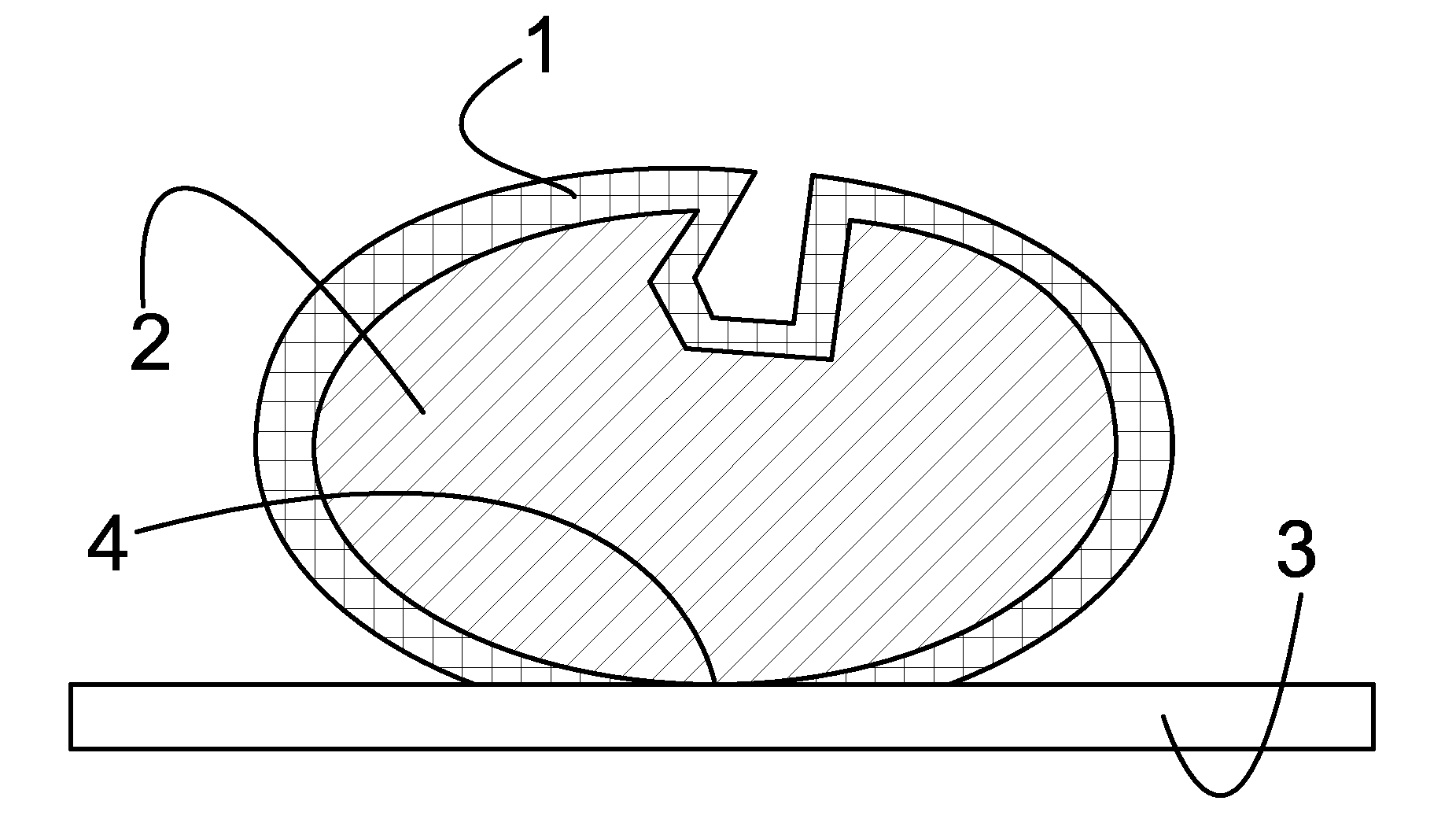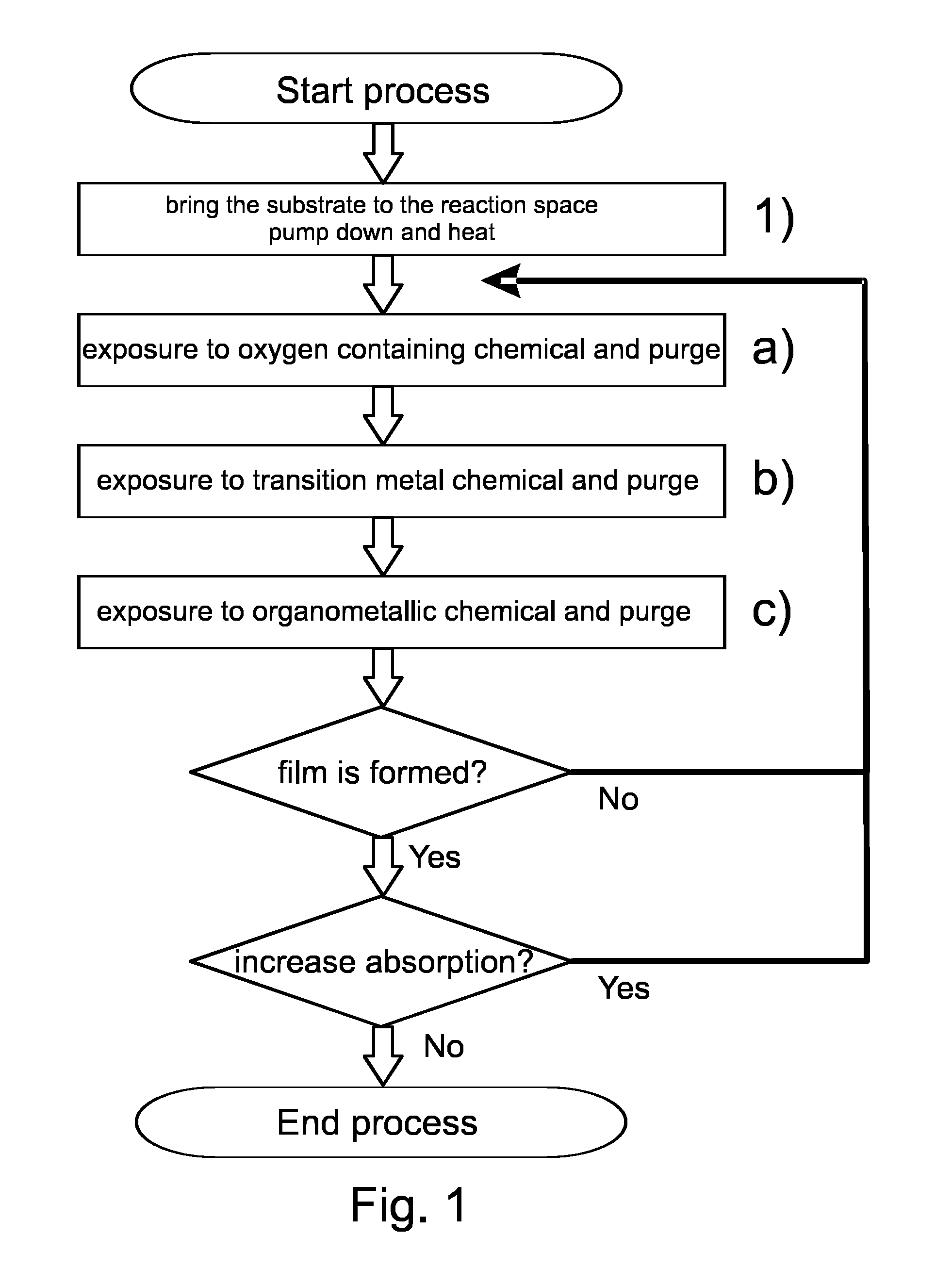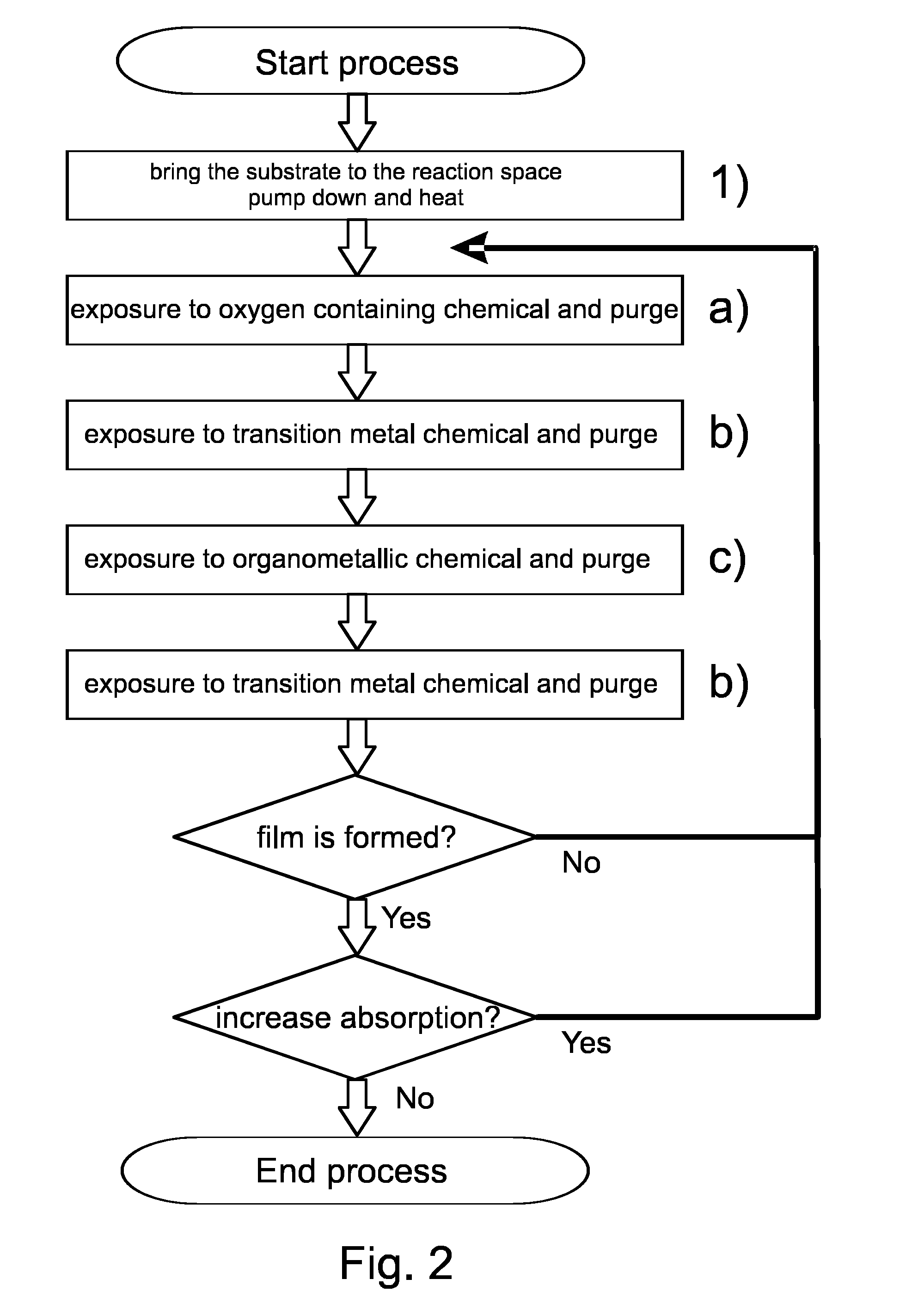Method for forming a decorative coating, a coating, and uses of the same
a technology of decorative coatings and coatings, applied in the direction of superimposed coating processes, instruments, natural mineral layered products, etc., can solve the problems of poor uniformity and conformation of the known methods of coating non-planar surfaces and substrates with complex shapes, inability to achieve the desired color or appearance, and inability to uniformly and uniformly coat complex three-dimensional objects. uniform and homogeneous coating of non-planar surfaces and substrates, etc., to achieve accurate control of film thickness, accurate control
- Summary
- Abstract
- Description
- Claims
- Application Information
AI Technical Summary
Benefits of technology
Problems solved by technology
Method used
Image
Examples
example 1
[0075]Using different processing temperatures absorbing films were formed on substrates according to the first embodiment of the invention (see FIG. 1). Visibly essentially transparent D263T glass substrates with a thickness of 0.3 mm (available from Schott AG, Germany) were first inserted inside the reaction space of a P400 ALD batch tool (available from Beneq OY, Finland). The substrates were planar to enable reliable optical transmission measurements. The substrates were positioned inside the reaction space such that both sides of the substrate glass were exposed (i.e. not masked) to the surrounding reaction space. In this example the carrier gas discussed above, and responsible for purging the reaction space, was nitrogen (N2).
[0076]After preparations for loading the substrates into the ALD tool, the reaction space of the ALD tool was pumped down to underpressure and a continuous flow of carrier gas was set to achieve the processing pressure of about 1 mbar (1 hPa) and the subst...
example 2
[0083]Absorbing films were formed on substrates according to the second embodiment of the invention (see FIG. 2). Visibly essentially transparent D263T glass substrates with a thickness of 0.3 mm (available from Schott AG, Germany) were first inserted inside the reaction space of a P400 ALD batch tool (available from Beneq OY, Finland). The substrates were planar to enable reliable optical transmission measurements. The substrates were positioned inside the reaction space such that both sides of the substrate glass were exposed (i.e. not masked) to the surrounding reaction space. In this example the carrier gas discussed above, and responsible for purging the reaction space, was nitrogen (N2).
[0084]After preparations for loading the substrates into the ALD tool, the reaction space of the ALD tool was pumped down to underpressure and a continuous flow of carrier gas was set to achieve the processing pressure of about 1 mbar (1 hPa) and the substrates were subsequently heated to the p...
PUM
| Property | Measurement | Unit |
|---|---|---|
| Temperature | aaaaa | aaaaa |
| Temperature | aaaaa | aaaaa |
| Temperature | aaaaa | aaaaa |
Abstract
Description
Claims
Application Information
 Login to View More
Login to View More - R&D
- Intellectual Property
- Life Sciences
- Materials
- Tech Scout
- Unparalleled Data Quality
- Higher Quality Content
- 60% Fewer Hallucinations
Browse by: Latest US Patents, China's latest patents, Technical Efficacy Thesaurus, Application Domain, Technology Topic, Popular Technical Reports.
© 2025 PatSnap. All rights reserved.Legal|Privacy policy|Modern Slavery Act Transparency Statement|Sitemap|About US| Contact US: help@patsnap.com



